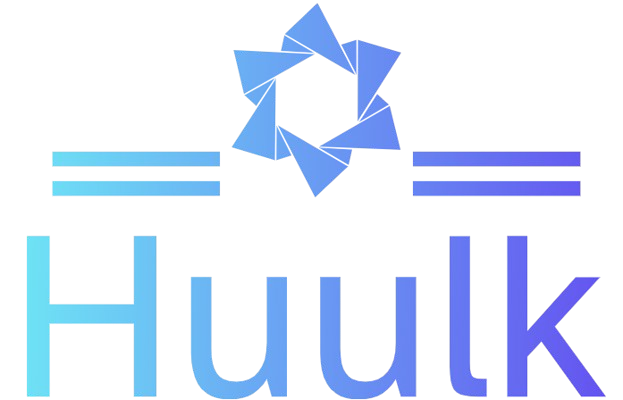Introduction to GitLab and its features
In the fast-paced world of scientific research, collaboration is key. As projects grow in complexity and global teams become more common, researchers need tools that facilitate seamless communication and efficient workflows. Enter GitLab—a platform that’s transforming how scientists work together. With its robust features tailored for project management, version control, and team collaboration, GitLab has emerged as a go-to solution for those looking to enhance their research efforts of totally science gitlab.
But what makes this tool particularly valuable for scientists? The ability to share ideas, code, data sets, and findings in real time can dramatically impact research outcomes. Whether you’re part of a large university or an independent lab team, leveraging platforms like GitLab can elevate your collaborative game. Let’s explore the significance of teamwork in science and how Totally Science GitLab is paving the way for innovative partnerships in this dynamic field!
The importance of collaboration in scientific research
Collaboration is at the heart of scientific advancement. When researchers come together, they blend diverse perspectives and expertise. This synergy often sparks innovation that solitary efforts might miss.
Working in teams allows for a more thorough exploration of complex problems. Different skill sets can tackle various aspects of a project, leading to richer outcomes.
Moreover, collaboration fosters an environment where ideas can be freely shared and critiqued. Constructive feedback plays a crucial role in refining hypotheses and methodologies.
In today’s interconnected world, research is rarely confined to one lab or institution. Global collaborations enable scientists to pool resources and share findings across borders quickly.
When scientists unite their knowledge, they drive progress further than any individual could alone. The collaborative spirit not only accelerates discovery but also enhances the credibility and impact of research outcomes.
How GitLab is specifically designed for scientists
GitLab stands out as an ideal platform for scientists, addressing their unique needs through tailored features. It offers version control, allowing researchers to track changes in their code and data seamlessly.
Collaboration is at the core of GitLab’s design. Scientists can work on shared projects from anywhere, facilitating real-time contributions and discussions. This is crucial in a field where interdisciplinary teamwork often leads to breakthroughs.
The platform also supports various file types commonly used in research, making it easier to manage everything from datasets to manuscripts. Features like issue tracking help teams prioritize tasks effectively.
Moreover, the integration with continuous integration/continuous deployment (CI/CD) pipelines automates testing processes, ensuring that experiments yield reliable results every time. With its user-friendly interface and robust functionality, GitLab empowers scientific collaboration like never before.
Case studies of successful collaborations using GitLab
One notable case study involves a team of biologists researching genetic variations in plants. By utilizing totally science GitLab, they streamlined their workflow, allowing multiple researchers to contribute code and data simultaneously. This real-time collaboration led to faster discoveries and the ability to quickly adapt experiments based on shared insights.
Another example is a cross-disciplinary partnership between chemists and data scientists focused on drug discovery. They used GitLab’s version control features to track changes in experimental protocols while sharing findings in an organized manner. The result was unprecedented efficiency that accelerated their project timeline significantly.
A third instance featured environmental scientists analyzing climate change models. With totally science GitLab, they centralized all documentation, making it easier for remote team members to stay updated and involved regardless of time zones or locations—fostering a culture of open communication and shared goals among diverse experts.
Benefits of using GitLab for scientific projects
GitLab offers a seamless platform for scientists to manage their projects efficiently. With built-in version control, researchers can easily track changes and collaborate on shared documents without losing vital information.
The integration of CI/CD (Continuous Integration/Continuous Deployment) means that data analysis and code execution become automated processes. This not only saves time but also reduces human error in scientific workflows.
Another advantage is the ability to create repositories that are private or public. This feature supports collaboration across institutions while safeguarding sensitive research data.
Additionally, GitLab’s issue tracking allows teams to prioritize tasks effectively. Scientists can focus on critical aspects of their projects instead of getting bogged down by administrative details.
Real-time collaboration features enhance communication within teams, providing instant feedback loops that foster innovation and creativity in research endeavors. The flexibility of GitLab adapts well to diverse scientific disciplines as well.
Step-by-step guide on implementing GitLab in a research team
Implementing GitLab in a research team starts with defining your project goals. This clarity helps streamline collaboration right from the beginning.
Next, create a GitLab account and set up your repository. Organize it based on your project’s needs; this could include folders for data, documentation, and code.
Invite team members to join the repository. Assign roles according to their expertise—developers, analysts, or project managers—to ensure efficient task distribution.
Utilize GitLab’s issue tracking feature. This allows everyone to report bugs or propose enhancements openly. Keeping communication transparent can significantly enhance workflow efficiency.
Encourage regular commits of work into the repository. Frequent updates foster accountability and help track progress over time.
Schedule periodic reviews of contributions through merge requests. These check-ins not only improve code quality but also keep the entire team aligned with ongoing developments.
Challenges and limitations of using GitLab in science
While GitLab offers numerous advantages for scientific collaboration, it isn’t without its challenges. One significant hurdle is the learning curve associated with its vast array of features. Not all researchers are tech-savvy, and some may find the interface overwhelming.
Another limitation involves data storage and management. Large datasets often exceed standard repository limits, making organization cumbersome. Researchers must navigate these constraints while ensuring data integrity.
Integration with other specialized tools can also be tricky. Many scientists rely on software tailored for specific tasks that might not seamlessly connect to GitLab’s platform.
Fostering a collaborative culture within diverse teams poses difficulties. Different workflows and communication styles can lead to misunderstandings if not addressed early in the process—a common concern in multidisciplinary research environments.
Future developments and improvements for scientific collaboration through GitLab
The future of scientific collaboration through GitLab looks promising, fueled by a continuous stream of innovations. As more researchers embrace digital tools, GitLab is expected to enhance its capabilities with advanced features tailored for data analysis and visualization.
Integrating artificial intelligence could lead to smarter project management tools. Imagine automatic suggestions for team roles based on skill sets or predicting timelines using historical data.
Another exciting possibility is improved interoperability with other platforms. Seamless integration with cloud storage solutions and databases will streamline workflows, enabling scientists to access their resources without friction.
Moreover, community-driven development will likely play a significant role. By actively engaging users in feature requests and beta testing, GitLab can evolve in ways that meet the real-world needs of researchers everywhere.
As these developments unfold, the landscape of scientific collaboration may transform into something even more dynamic and interconnected than before.
Conclusion: The potential impact of Gitlab
The potential impact of GitLab on scientific collaboration is immense. As researchers increasingly seek streamlined ways to share knowledge and data, tools like GitLab offer unique solutions tailored for the scientific community.
By integrating version control and project management features, it empowers teams to collaborate seamlessly across various disciplines and geographical boundaries. The case studies highlight how effective communication and organized workflows can lead to groundbreaking discoveries.
Moreover, as more scientists adopt platforms like GitLab, a culture of open science emerges. This shift encourages transparency in research processes and promotes reproducibility—two fundamental pillars that strengthen credibility within the scientific arena.
With ongoing advancements in technology, we can anticipate further enhancements designed specifically for researchers. These improvements could revolutionize how we approach collaborations in science today.
Adopting Totally Science GitLab may very well be a game-changer for those looking to push the boundaries of innovation while fostering an inclusive environment where every voice can contribute meaningfully.
FAQs
1. What is “Totally Science GitLab”?
Totally Science GitLab is a collaborative platform tailored for scientific research, enabling seamless project management, version control, and real-time communication among researchers.
2. How does Totally Science GitLab facilitate collaboration?
The platform allows teams to work together from anywhere, sharing code, data, and findings in real time, which enhances communication and accelerates innovation in research.
3. What are the main features of Totally Science GitLab?
Key features include version control, issue tracking, CI/CD integration for automated testing, and support for various file types, all designed to optimize scientific workflows.
4. Can Totally Science GitLab improve research efficiency?
Yes, by automating repetitive tasks and providing a centralized system for project management, it helps researchers focus on their work, thereby increasing overall efficiency.
5. What challenges might researchers face when using Totally Science GitLab?
Challenges include a learning curve for users unfamiliar with technology, managing large datasets, and ensuring effective communication within diverse teams.







